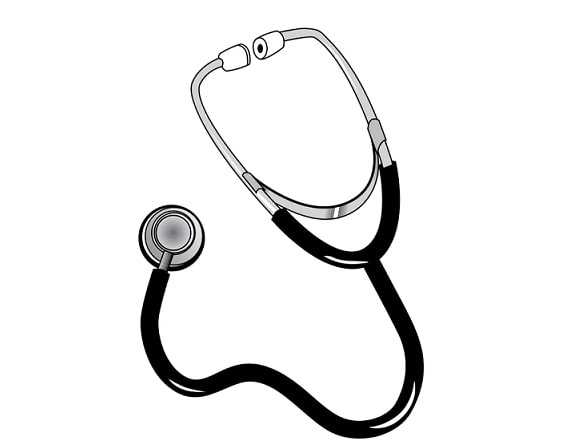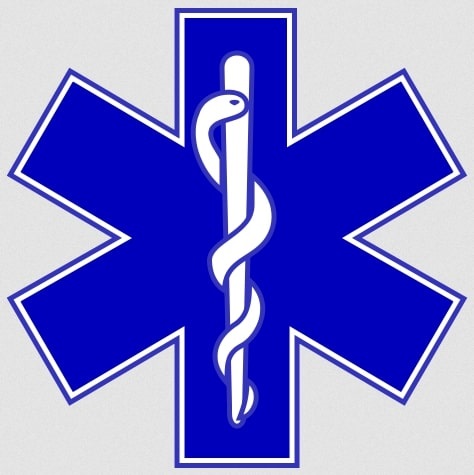Introduction: In this article, Jessica Edwards gives tips for including medical history in your family history research. Jessica has had a lifelong interest in her family’s history – especially on her father’s side, which goes back to the first settlers in Pennsylvania, Jamestown and New England – and has documented and added more than 21,000 people to her family tree!
Have you ever gone to the doctor or a hospital and been presented with a sheaf of papers asking for your family’s medical history? This is also a part of genealogy, believe it or not. The diseases your family has had, allergies, habits (like smoking and drinking) – as well as your own – may give the doctors some clue as to what is currently happening to you and/or your children. Start with yourself and then follow the same steps for as many family members as possible.

The need for this became evident when a cousin of mine lapsed into a coma suddenly and he had no regular doctor. He was taken to the hospital along with his (locked) cell phone, but by the time they finally got into the emergency information they found that his emergency contacts were outdated by more than 10 years. They had to keep him on life support while searching for both his closest relative and his last physician (it took more than 14 days). Unfortunately, my cousin never regained consciousness and was taken off life support and died. When I learned of this set of events, I set out creating a medical history for myself and began teaching the students in my family history class how to do the same for themselves.
Tackling this ball of wax with others can be a thorny path, as some may not want to share details of their medical history with you – so tread carefully! I would suggest talking about how doctors might be tipped off to genetic problems that may occur in your family and how they could possibly perform tests to see if that problem may be starting, which could lessen the severity or prevent completely the disease with minor changes to your life.
I was stressed how cancer (lung, breast, ovarian, and intestinal) ran in my family, as well as heart disease and COPD. Knowing I have a likely genetic predisposition for these conditions, I began by finding out at what age they were diagnosed in my family members. That helped to know when to start doing screening tests and make slow changes to diet, and so far my siblings and I have beat developing what has shown up in every member of our large extended family. For example, early colonoscopies found precancerous polyps which were removed in several of my cousins and a sibling, thus avoiding potential colon cancer.
Step One
The first step in recording a personal medical history, like in starting a family tree, is to collect any and all information that pertains to your own health care, including records of visits to the doctor’s office, documents of trips to the hospital or ER, and any medical bills and papers related to your insurance plan, etc. It also includes going to as many people/organizations who have participated in your health care throughout your life (parents, schools, primary care doctors, specialists, counselors, and others) as you can, obtaining as much information as possible. You may soon find out that some data is lost forever, impossible to uncover, or too difficult to retrieve, and that is okay if the information is not critical or too important.
Depending on how extensive your medical history is, I recommend investing an hour or two a day for several days to collect the basic, yet important facts. You can always add details and new data as time goes on and as you get more proficient at recording your medical history (especially, as it occurs).
Concentrate on dates, health visits, sicknesses, treatments, immunizations, childhood illnesses, medications (spelling, doses, what it was for, etc., is quite important), doctors’ names, and other facts that would be important to health care practitioners you may see in the future.
Keep in mind the who, what, where, when, and why rules of information gathering (because of HIPPA you will need to probably fill out a release form for each doctor and hospital, so be prepared). Make phone calls, use the fax machine, go online, and do anything else that can make the data collection process efficient and save you from unnecessary trips and wasted time.
Step Two
Step two involves writing a time line of your health history, including specific illnesses, hospitalizations, surgeries, significant physician contacts, loss of work, injuries and accidents, medication use, and other elements that will be discussed in step three. Start this time line by recording the major events that you can recall by memory, then begin to fill in the details offered by your personal data search. This whole process will spur your mind to remember even more medical events and facts that may have long been forgotten.

Step Three
Step three is to organize all of this information into a format that doctors and medical practitioners are familiar with. Ask your doctors what medical forms they use. You can never be too accurate or detailed in your documentation, and a good practitioner will always appreciate your initiative to assume more responsibility for your body, mind, and health.
Physicians, physician assistants, nurses, and nurse practitioners like to record their patients’ medical histories in a certain fashion, and a copy of this document that you create about yourself or a loved one should be kept in a paper file at home and on a computer hard drive if possible, and I suggest updating it every six months if possible and then date it.
Take a copy of this personal medical history with you when you visit a health facility, and share it with practitioners whom you choose. You may also want to store a copy at a relative’s home or in a safe deposit box just in case something unfortunate happens to your abode.
After compiling your own medical history, focus on immediate family members, then extended family members. Keep medical information in mind as you research your ancestors, and document any relevant information you run across. By expanding your research to include medical history, you make a more complete genealogy of your family line.
Happy Hunting!

Don’t overlook mental health. Illnesses such as schizophrenia run in a family, also. And having a family member who committed suicide can result in other family members doing the same.
You are right Elaine. I should add that section to my own Medical Genealogy. Thanks for suggesting it. If you have any other suggestions or need help with genealogy issues feel free to contact me. Happy Hunting!